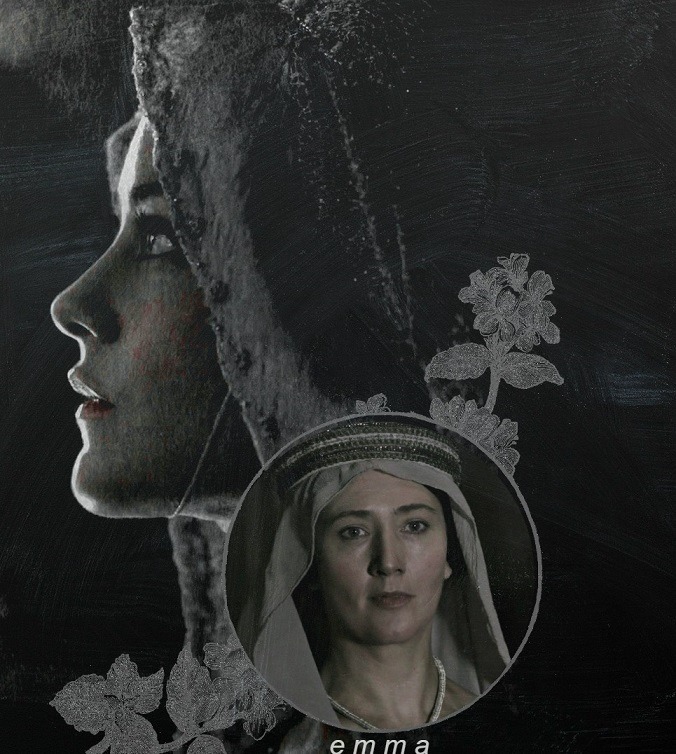madamelamarquys:Queens consort of England : Emma of NormandyEmma (c. 985–March 6, 1052 in Winchester
madamelamarquys:Queens consort of England : Emma of NormandyEmma (c. 985–March 6, 1052 in Winchester, Hampshire), called Ælfgifu, was daughter of Richard the Fearless, Duke of Normandy, by his second wife Gunnora. She was Queen consort of the Kingdom of England twice, by successive marriages: initially as the second wife to Ethelred (or Æthelred) of England (1002-1016); and then to Canute the Great of Denmark (1017-1035). Two of her sons, one by each husband, and two stepsons, also by each husband, became kings of England, as did her great-nephew, William the Conqueror, Duke of Normandy who used his kinship with Emma as the basis of his claim to the English throne. Her first marriage was by arrangement between her brother, Richard II of Normandy and the English king, 20 years her senior, to create a cross-channel alliance against the Viking raiders from the North, with whom Emma was also related. Canute, ten years her junior, as king by conquest not by right, used his marriage with the Queen to legitimize his rule. An innovation in the Queen’s coronation rite (her second) made her a partner in Canute’s rule, which represents a trend towards Queens playing a more significant role, at least symbolically, as peacemakers and unifiers of the realm.Emma is considered to be the first Queen who was called “Queen Mother” when her sons ruled as monarch. Her first marriage resulted in her acquiring considerable land and wealth in her own right. She used her position to become one of the most powerful women in Europe, possibly acting as regent during Canute’s absences and after his death in 1035, when she controlled the royal treasury. With Canute, as well as in her own right, she was a generous benefactor of the Church. Edward the Confessor, her son, became a Saint. She was consulted on matters of state and on church appointments. Edward relieved her of most of her possessions in 1043, claiming that they belonged to the king and banished her to Winchester. She was re-instated at court the following year.Arguably the most powerful women in English history until Elizabeth I, she helped to shape developments that paved the way for women, centuries later, to rule in their own right. Her partnership with Canute saw several decades of peace. While some may blame her for the Norman Conquest, her great-nephew’s rule also brought England into the context of a larger entity, that of Europe. The subsequent mixture of Anglo-Saxon and French cultures became, over the years, a foundation for integrating England into the European cultural life. The English monarch is still the Duke of Normandy. -- source link
Tumblr Blog : madamelamarquys.tumblr.com
#english history#reblog#royalty
